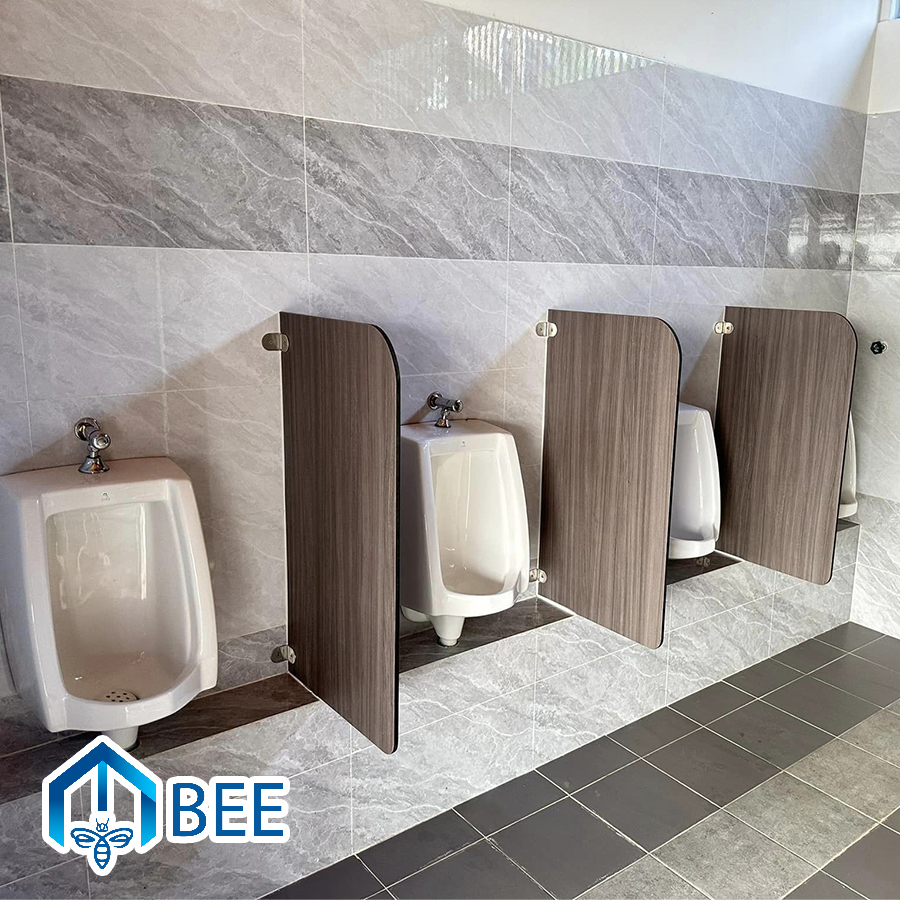High-Pressure Laminate (HPL) partitions have distinct environmental advantages and disadvantages compared to other partition materials. Here’s a comparison to help you understand their environmental impact:
1. HPL Partitions
Advantages:
- Sustainable Manufacturing: HPL laminates are produced through a process that significantly reduces waste and emits low levels of volatile organic compounds (VOCs), which are harmful to both human health and the environment.
- Longevity: HPL partitions have a long lifespan, reducing the need for frequent replacements and minimizing waste.
- Recyclability: HPL can be recycled, although the process is not as straightforward as with some other materials.
Disadvantages:
- Carbon Footprint: The carbon footprint of HPL is approximately 1.2 kg CO2 eq/m², which is relatively high compared to some other materials.
2. Glass Partitions
Advantages:
- Natural Light: Glass partitions enhance natural light within the workspace, reducing the need for artificial lighting and lowering energy consumption.
- Recyclability: Glass is highly recyclable and can be reused indefinitely without losing quality.
Disadvantages:
- Energy-Intensive Production: The production of glass requires high temperatures, leading to significant energy consumption and carbon emissions.
- Fragility: Glass is more prone to breaking, which can lead to increased waste and replacement needs.
3. Gypsum (Drywall) Partitions
Advantages:
- Affordability: Gypsum partitions are cost-effective and widely used in construction.
- Recyclability: Some drywall includes recycled gypsum, reducing reliance on virgin materials.
Disadvantages:
- Mining Impact: Gypsum mining disrupts natural habitats and leads to land degradation.
- Waste Generation: Drywall installation generates significant waste, and recycling options are limited.
4. Wooden Partitions
Advantages:
- Renewable Resource: Wood is a renewable material and can sequester carbon, reducing overall carbon emissions.
- Low Energy Production: The production of wooden partitions consumes less energy compared to other materials.
Disadvantages:
- Deforestation: Unsustainable logging practices can lead to deforestation and loss of biodiversity.
- Maintenance: Wood requires regular maintenance to prevent damage from moisture and pests.
5. Metal Partitions
Advantages:
- Recyclability: Steel is 100% recyclable and can be reused indefinitely without losing quality.
- Durability: Metal partitions are highly durable and have a long lifespan.
Disadvantages:
- Energy-Intensive Production: The production of steel involves high energy consumption and significant carbon emissions.
- Resource Extraction: Mining for metals can have severe environmental impacts, including habitat destruction and pollution.
Each partition material has its unique environmental benefits and drawbacks. When choosing the right partition material, consider factors such as sustainability, recyclability, energy consumption, and the specific requirements of your project. If you need more detailed information or have a specific scenario in mind, feel free to ask!
For any questions, please contact us for free consultation
- MBEE PRODUCTION TRADING IMPORT EXPORT JOINT STOCK COMPANY
- No. 726 Le Van Khuong, Thoi An Ward, District 12, Ho Chi Minh City.
- No. 158 Phan Trong Tue, Thanh Liet Ward, Thanh Tri District, Hanoi City (Gate No. 3 next to Samco Auto Repair Workshop)
- Hotline: 0937 316 387 (Mr. Hai) – 0909.101.885 (Ms. My)
- Email: cungcapvachngan@gmail.com
- Website: www.tamcompact.vn



